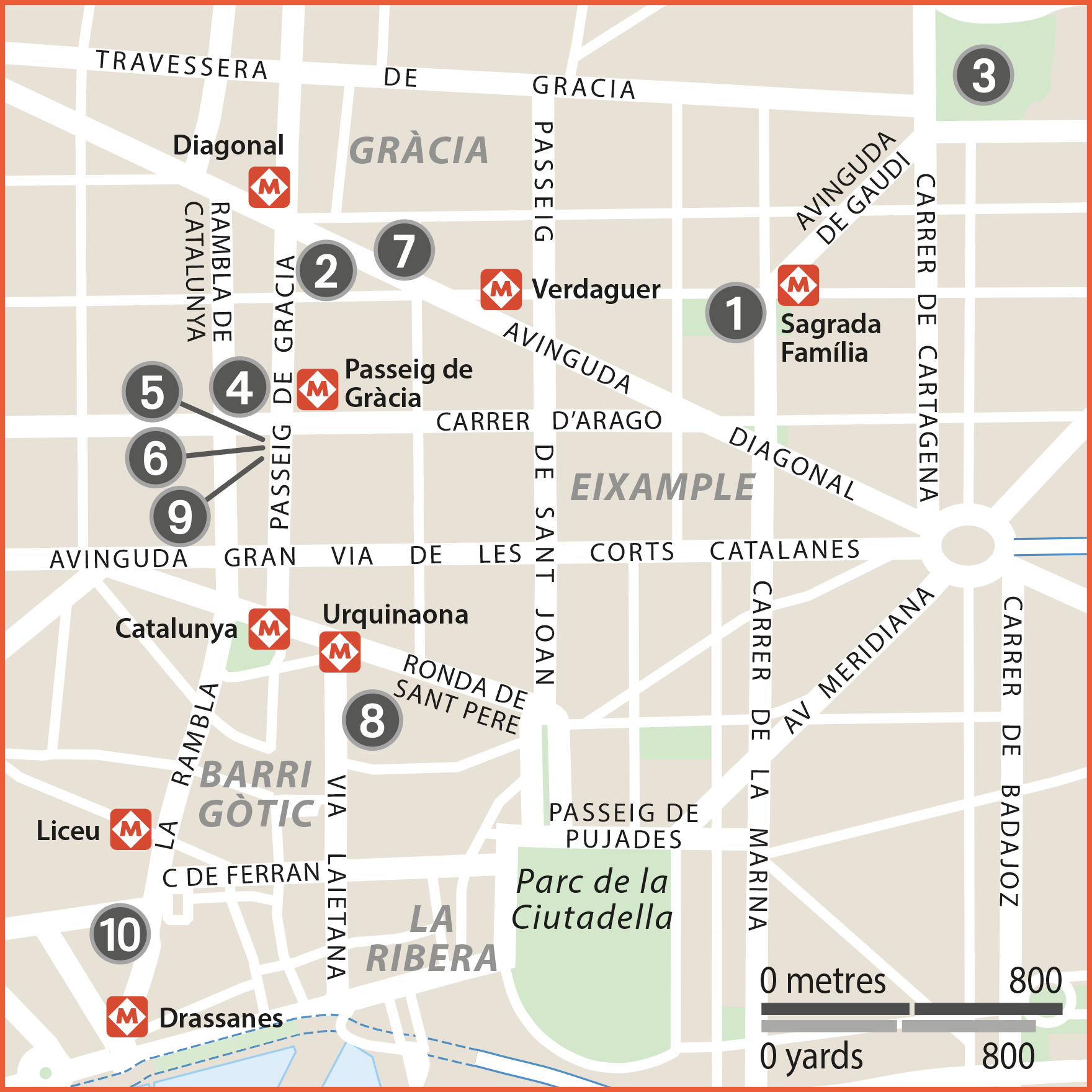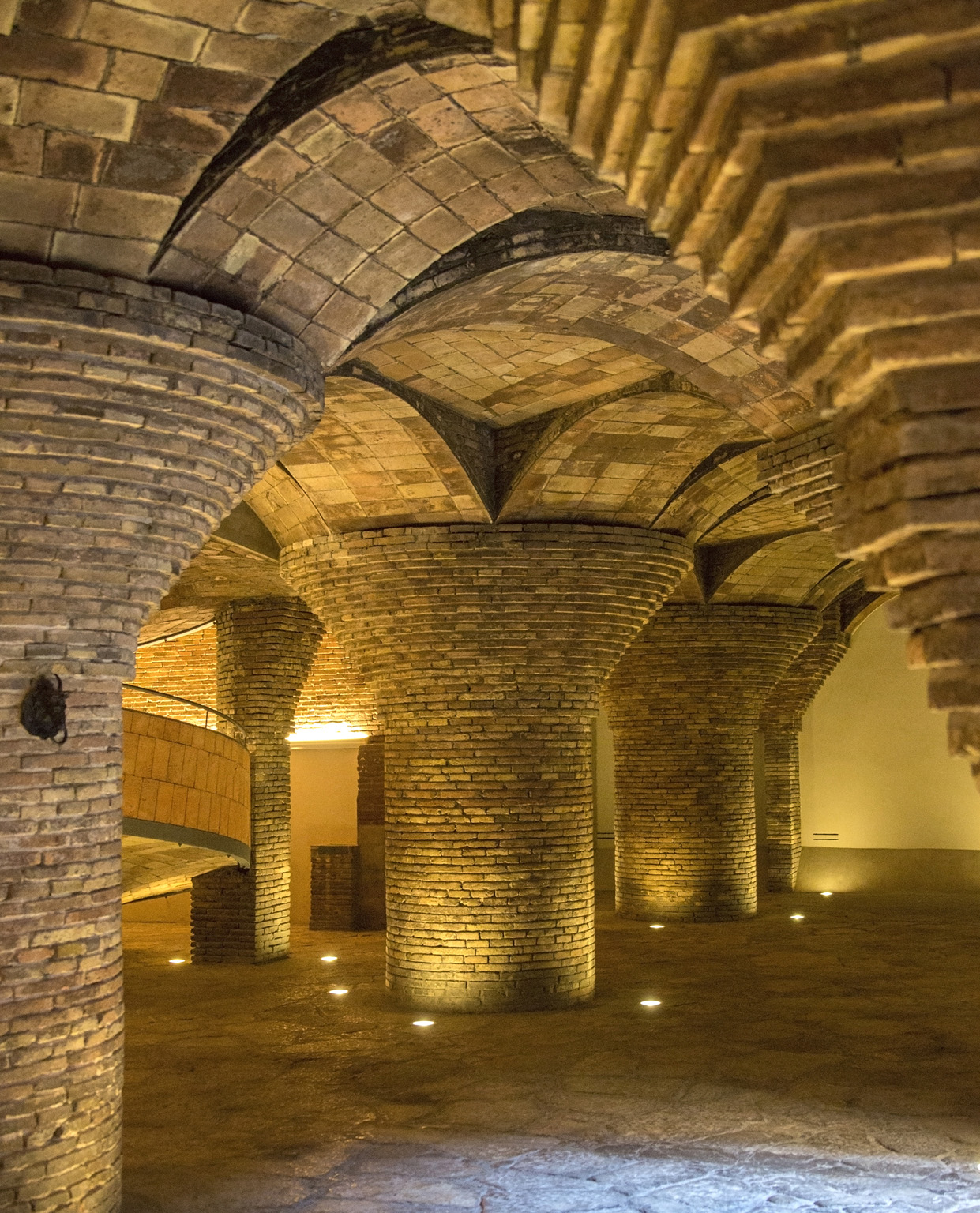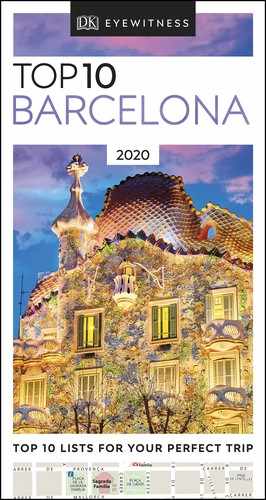MODERNISTA BUILDINGS

1. Sagrada Família
Dizzying spires and intricate sculptures adorn Gaudí’s magical masterpiece (see Sagrada Família). Construction began at the height of Modernisme, but is still in progress more than a century later.
2. La Pedrera
This amazing apartment block, with its curving façade and bizarre rooftop, has all of Gaudí’s architectural trademarks (see La Pedrera). Especially characteristic are the building’s wrought-iron balconies and the ceramic mosaics decorating the entrance halls.
3. Sant Pau Recinte Modernista
In defiant contrast to the Eixample’s symmetrical grid-like pattern, this ambitious project (see Sant Pau Recinte Modernista) was planned around two avenues running at 45-degree angles to the Eixample streets. Started by Domènech i Montaner in 1905 and completed by his son in 1930, the Hospital de la Santa Creu i de Sant Pau’s pavilions are lavishly embellished with mosaics, stained glass, and sculptures by Eusebi Arnau. The octa-gonal columns with floral capitals are inspired by those in the Monestir de Santes Creus, to the south of Barcelona.

Hospital de la Santa Creu i de Sant Pau
4. Fundació Tàpies
With a Rationalist, plain façade alleviated only by its Mudéjar-style brickwork, this austere building (see Fundació Tàpies), dating from 1886, was originally home to the publishing house Montaner i Simón. It bears the distinction of being the first Modernista work to be designed by Domènech i Montaner, which explains why it has so few of the ornate decorative touches that distinguish his later works. Today it is home to the Fundació Tàpies, and is dominated by an enormous sculpture by the Catalan artist.
5. Casa Batlló
![]() Pg de Gràcia 43 • Open 9am–9pm daily • Adm (audio guide) • www.casabatllo.es
Pg de Gràcia 43 • Open 9am–9pm daily • Adm (audio guide) • www.casabatllo.es
Illustrating Gaudí’s nationalist sentiments, Casa Batlló, on La Mansana de la Discòrdia, is a representation of the Sant Jordi story. The roof is the dragon’s back; the balconies, in the form of carnival masks, are the skulls of the dragon’s victims. The façade exemplifies Gaudí’s remarkable use of colour and texture.

Colourful exterior of Casa Batlló
6. Casa Amatller
![]() Pg de Gràcia 41 • Open 11am–7pm daily; guided tours only; check timings online • Adm • www.amatller.org
Pg de Gràcia 41 • Open 11am–7pm daily; guided tours only; check timings online • Adm • www.amatller.org
The top of Casa Amatller’s façade bursts into a brilliant display of blue, cream and pink tiles with burgundy florets. Architect Puig i Cadafalch’s exaggerated decorative use of ceramics is typical of Modernisme. Tours include the Modernista apartment and a slide show in Amatller’s former photography studio (see Sagrada Família), and describe the neo-medieval vestibule.
7. Casa de les Punxes (Casa Terrades)
![]() Av Diagonal 420 • Open 10am–7pm daily; guided and audio tours only • Adm • www.casadelespunxes.com
Av Diagonal 420 • Open 10am–7pm daily; guided and audio tours only • Adm • www.casadelespunxes.com
Taking Modernisme’s Gothic and medieval obsessions to extremes that others seldom dared, Puig i Cadafalch created this imposing, castle-like structure between 1903 and 1905 (see Casa Terrades – “Casa de les Punxes”). Given the nickname Casa de les Punxes or “House of Spines” because of the sharp, needle-like spires that rise up from its conical turrets, the building’s real name is Casa Terrades, for its original owners. The flamboyant spires contrast with a façade that is sparsely decorated.
8. Palau de la Música Catalana
Domènech i Montaner’s magnificent concert hall is a joyous celebration of Catalan music. Ablaze with mosaic friezes, stained glass, ceramics and sculptures, it displays the full glory of the Modernista style. The work of Miquel Blay on the façade is rated as one of the best examples of Modernista sculpture in Barcelona.
9. Casa Lleò Morera
![]() Pg de Gràcia 35 • www.casalleomorera.com
Pg de Gràcia 35 • www.casalleomorera.com
Ironwork, ceramics, sculpture and stained glass come together here in a synthesis of the decorative and fine arts. The building’s exterior, designed by architect Domenèch i Montaner, can be viewed from the street. Only the ground floor is currently open to the public, occupied by the luxury leather-goods maker Loewe.
10. Palau Güell
This is a fine example of Gaudí’s experiments with structure, especially the use of parabolic arches to orchestrate space. He also used unusual building materials, such as ebony and rare South American woods.

Arched interiors of Palau Güell
